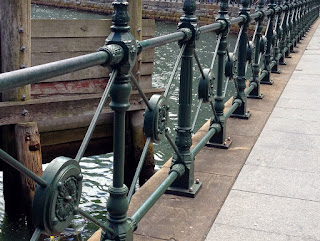The early brick fields were one city block down from Hyde Park, which Governor Macquarie officially set aside not long after his arrival in 1810. It was a hodge-podge of wire-grass and rubble and even the hoi-poloi used it. However, in 1841 Samuel Lyons, a developer and auctioneer, built a series of terraces on the SE corner of Hyde Park. Three storey terraces. Terraces of such a quality, according to Joseph Fowles, `without exception the best in the city, (that) would not disgrace the Regent's Park in London'. Can you see where this is heading?
Lyons was not the only developer with his eye on the main chance. Thomas Burdekin, an iron-mmonger and serial-real-estate-acquirer, built another row of terraces along College street diagonally across the way from the Lyons row. The smart set were not slow to acquire all these addresses. Doctors, dentists, lawyers, judges - the usual culprits - Dr Wallace and Chief-Justice Stephens, being but two.
Any Sydney-sider of the 21st century will agree that the landform is prone to southerly-busters, not that they cause much damage, and after a swelteringly humid day, they bring blessed relief. However the brick fields were holes in the ground devoid of trees. The winds - known then as "brick-fielders" - would howl up the slope and across the barren Hyde Park, quite upsetting the learned gentry. So, of course, the brick makers were shafted and moved to all points west, like Pyrmont, and Newtown, and Camperdown.
More on Hyde Park as the week progresses. |









(John+Rae).jpg)
.jpg)
2007+Airview+(Dictionary+of+Sydney).jpg)
.jpg)
.jpg)
.jpg)
















.jpg)



.jpg)

(from+approx.+Bathurst+St).jpg)









.jpg)


.jpg)
